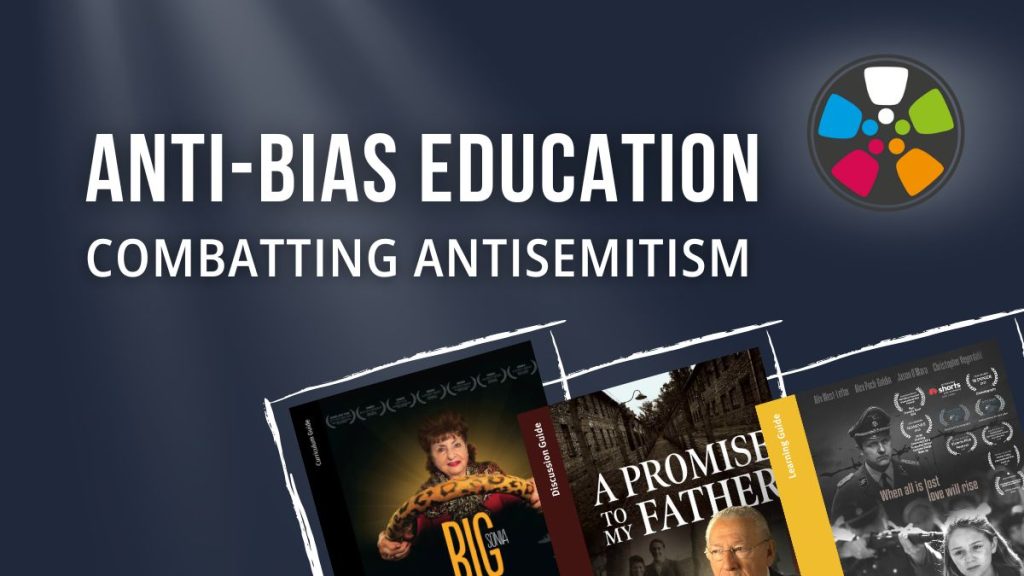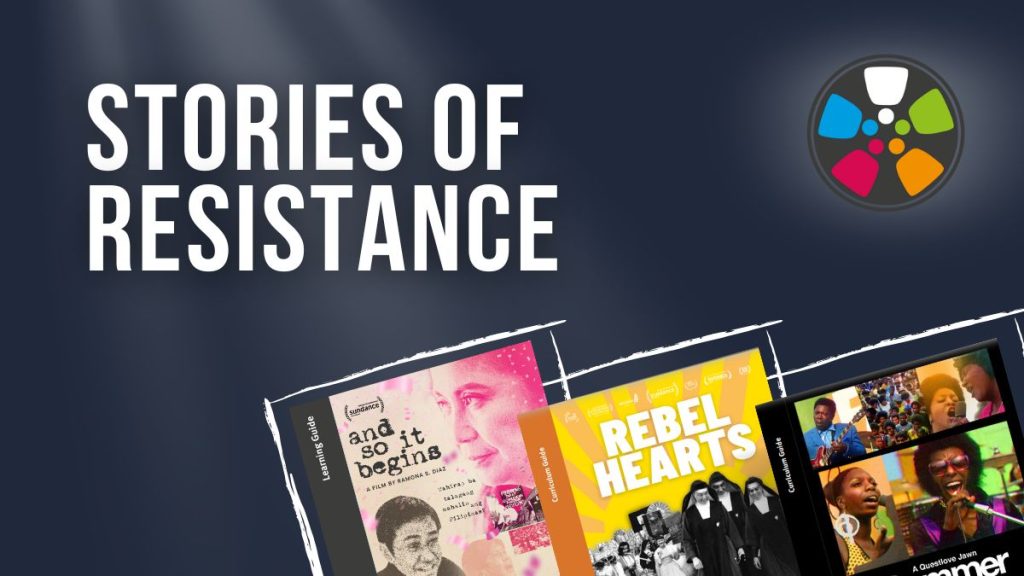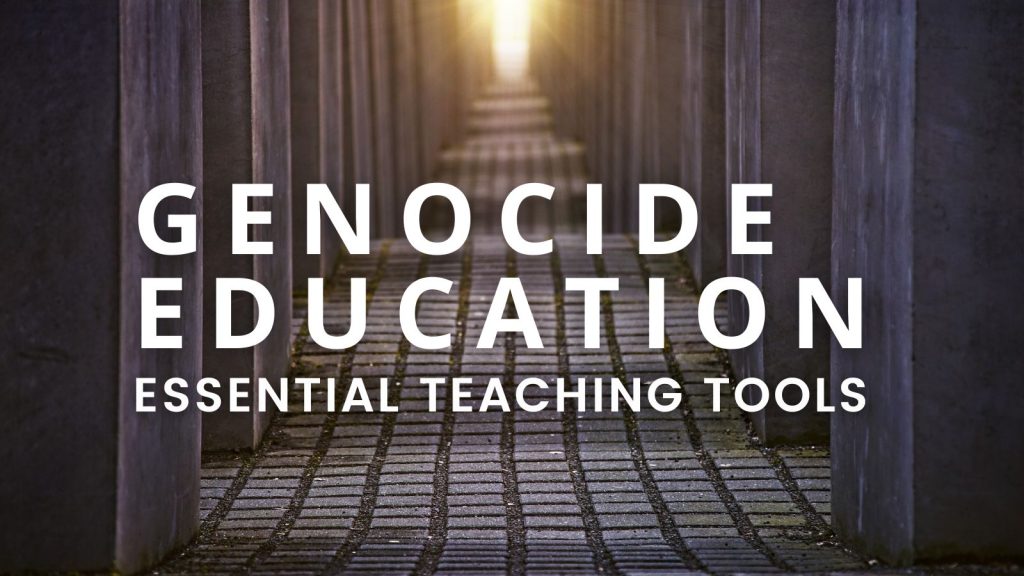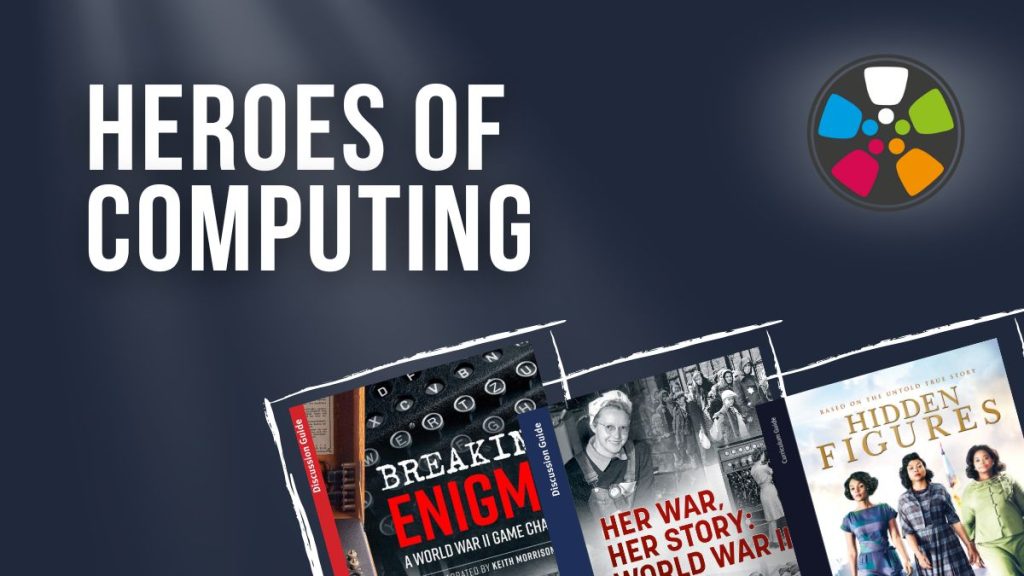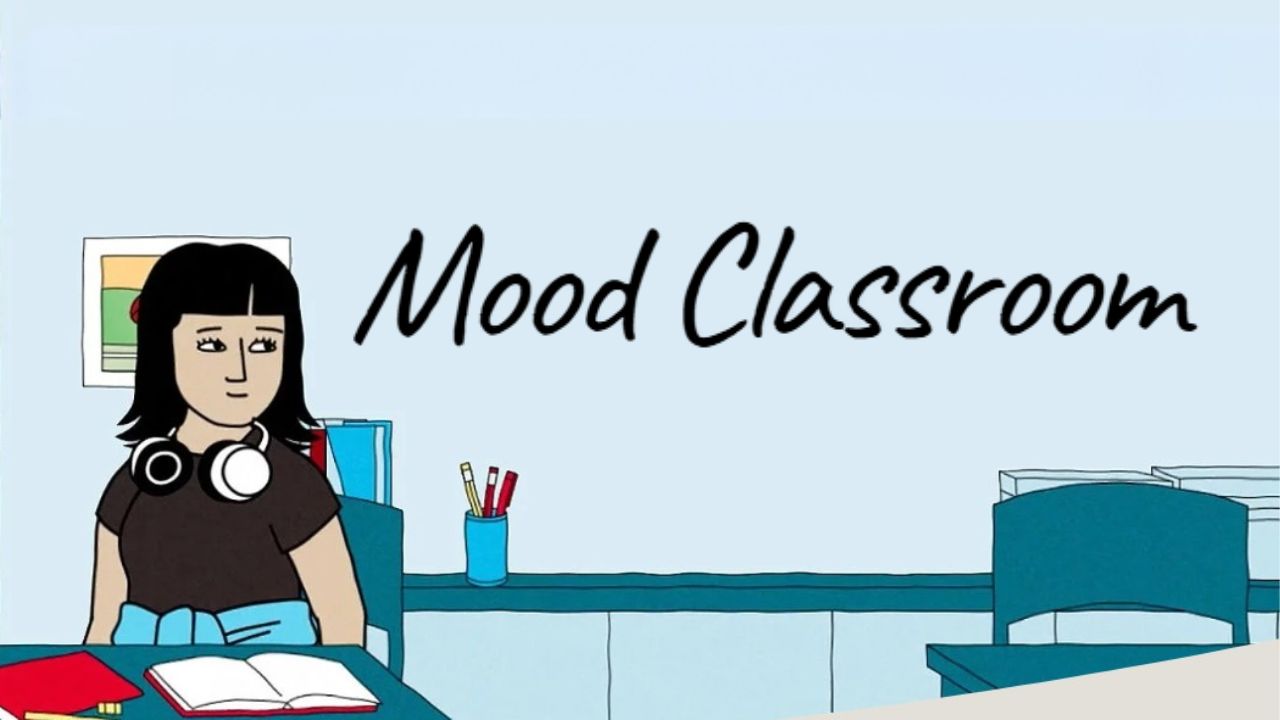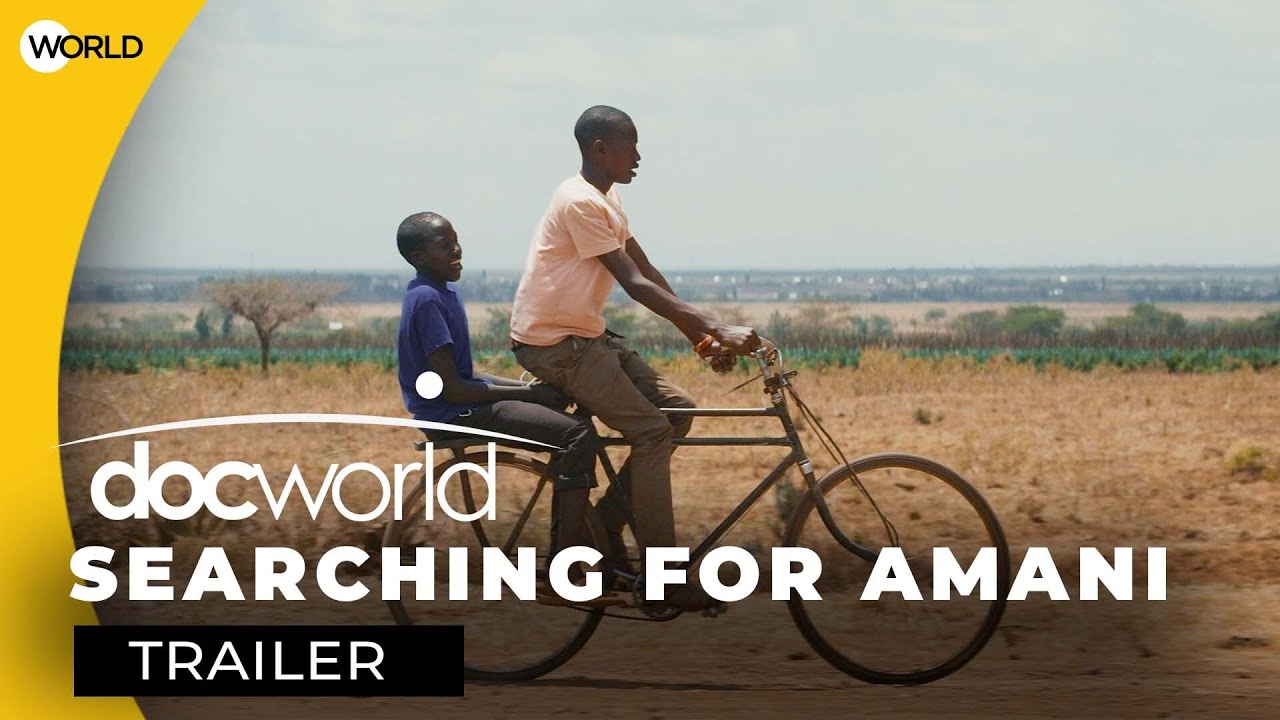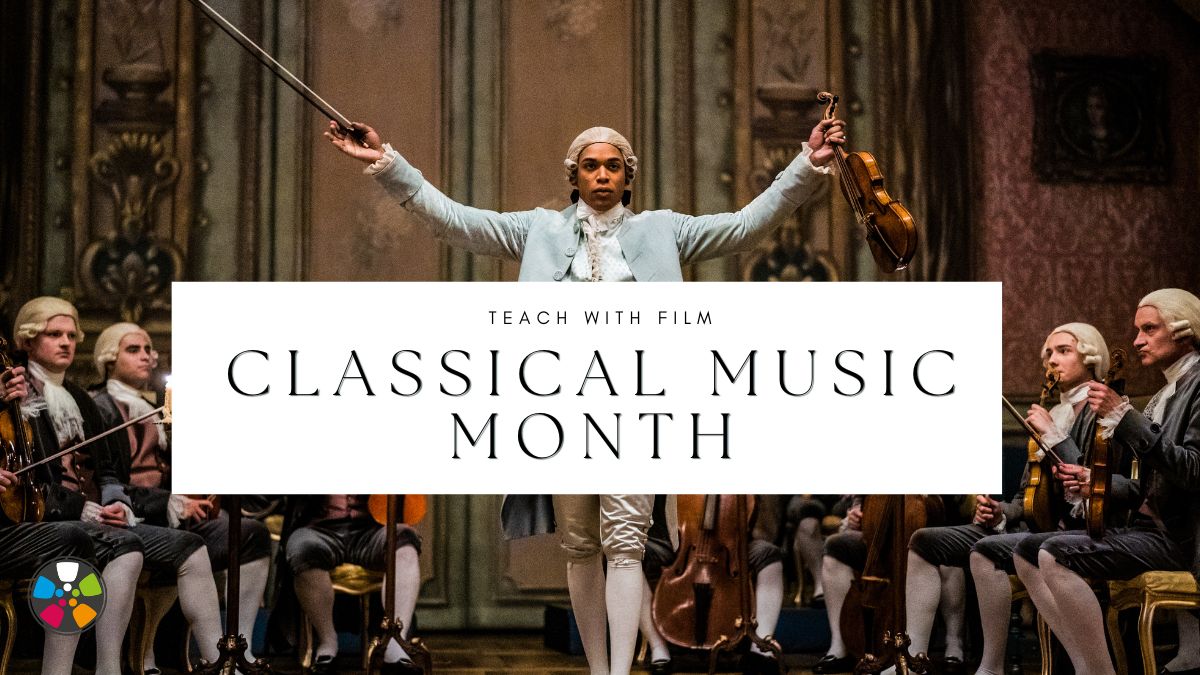Teaching with primary sources and educating students about primary and secondary sources is an important part of classroom learning. Similarly, teaching with film is a proven way to engage and excite students. However, did you know that films can be powerful tools for engagement around primary source learning for students?
We’re highlighting our free CORE-based curriculum guides that incorporate primary source learning activities. We’re here to help you in teaching with primary sources through film.

Teaching with Primary Sources Through Film – Six Films for Your Classroom
These six film curriculum guides offer opportunities for teaching with primary sources through film: Just Mercy, He Named Me Malala, Schindler’s List, Khalil Gibran’s The Prophet, River of Gold, andBig Sonia.
High School Classroom Resources
For the high school classroom, we recommend Just Mercy. This film tells the true life story of Bryan Stevenson, played by Michael B. Jordan. Specifically, the film focuses on Stevenson’s early work with the Equal Justice Initiative. Stevenson sought to provide quality legal assistance to individuals who have been unfairly sentenced, often because of their race.
Our curriculum guide for Just Mercy features four lessons. The primary source materials integrated into these lesson plans include political cartoons and the Bill of Rights.
The documentary River of Gold (for high school students) chronicles the clandestine journey of two war journalists and their guide into Peru’s Amazon rain forest. They hope to uncover the savage destruction of pristine jungle in pursuit of illegally mined gold. The film makes clear the consequences of this devastation on a global scale. Magnificent photography of plants, animals, and people inspires audiences to engage in solutions to protect the Amazon. Our eleven-lesson curriculum guide is particularly rich in STEM lessons.
This guide offers a creative approach to primary source learning, particularly Lesson 6 in which Landsat images become the primary source for student engagement.
Teaching the Holocaust
Another resource for high school students is Schindler’s List. This Academy Award Winning Film, directed by Steven Spielberg, tells the true life story of Oskar Schindler. Schindler joined the Nazi party. He took over a confiscated enamelware plant in occupied Krakow.
Initially, Schindler was eager to make a quick fortune on the labor of unpaid Jewish prisoners. Eventually, he risked everything to protect and rescue more than 1,100 Jews sheltered in his factory. Our comprehensive guide features eight lessons. It also includes survivor testimonials and stories, key primary source materials.
Similarly, Big Soniatells another important story from the Holocaust. Teenage Sonia Warshawski was living in Poland when the German army invaded. Her father and brother were shot. Her sister disappeared. Sonia and her mother became slave laborers and were deported to a death camp.
Now in her nineties, Sonia is a vibrant woman who shares her story of unimaginable suffering. Her story is also a story of hope, resilience, and of a refusal to hate.
Like Schindler’s List, the curriculum guide for the documentary Big Sonia includes Holocaust survivor testimonials and stories as primary source materials. Additionally, the documentary itself is a rich primary source. Integrating documentary and narrative films about the Holocaust into classroom instruction, alongside Holocaust testimonials, is a powerful way of teaching with primary sources through film.
Global Learning
Malala Yousafzai was a teenage girl, like Sonia, when terror struck her small community. She was shot in the head by representatives of the Taliban for insisting on girls’ right to an education.
He Named Me Malala is a documentary that tells Malala’s inspiring true life story. One of our most comprehensive CORE-based curriculum guides, this guide includes 10 lessons. Notably, Lesson 7 centers on Malala’s Nobel Peace Prize Address. This speech is a powerful primary source for students to explore.
Finally, Khalil Gibran’s The Prophet is a stunning animated film that brings to life Gibran’s book by the same name. With a corresponding lesson for each book chapter, our curriculum guide engages students with the rich primary source material that is Gibran’s poetry and art.
Our resources for He Named Me Malala, especially Lessons 1-5 and Lesson 7, and Khalil Gibran’s The Prophet are both adaptable for middle school classrooms.
The six guides featured here offer creative ways for educators to focus on teaching with primary sources through film. We’d love to hear how you utilize our resources in your classroom and what other primary source instruction you offer!
Update November 2023: To celebrate the 30th anniversary of Schindler’s List, we have launched a special edition Schindler’s List curriculum guide. Our new guide features an updated antisemitism lesson: Antisemitism Today. You can also use the new lesson on its own or pair it with our Navalny lesson on propaganda, or with Holocaust education films like Big Sonia.
Article Author: Jennifer Fischer, Executive Director for Journeys In Film. You can follow her on Twitter at @IndieJenFischer where she shares other educational articles, promotes cool film projects, celebrates her family and her creative writing, highlights various social justice initiative and more. She also has her own Medium page. Recently she highlighted the conflict in Ethiopia. Educators might enjoy her post about the Pueblo Revolt, America’s First Revolt.

